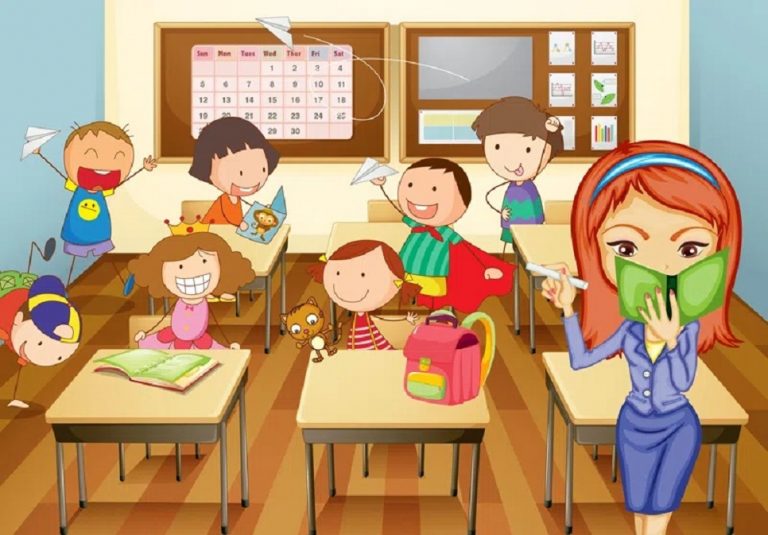
A study found that students in noisy classrooms were more likely to generate unique and creative ideas, as the noise stimulated their imaginations and encouraged them to think outside of the box
Saiful Islam Junaed
Do you remember your school days when you had to endure a quiet classroom with strict discipline? Or do you recall a class where there was constant chatter, laughter, and movement, which you may have found annoying or distracting? Well, according to some recent research, a noisy classroom can have benefits for learning, and it’s possible to make it a productive environment for all students. The problem with a too quiet classroom is that it can be too sterile and suppressive of creativity, interaction, and engagement. On the other hand, a too noisy classroom can be chaotic and overwhelming, disrupting learning and causing stress. A certain level of noise is not a distraction or a problem to be solved, but rather an essential aspect of learning that should be embraced and leveraged by teachers. It can stimulate the brain and increase creativity. When students are allowed to engage in open discussions and share ideas freely, they are more likely to come up with creative solutions. Counter intuitively, some background noise can help students focus better on a task at hand.
A study published in the Journal of Applied Cognitive Psychology found that a moderate level of noise (around 70 decibels) improved performance on a cognitive task compared to silence or high levels of noise. Research conducted by the University of Michigan found that students in noisy classrooms were more likely to engage in active learning and collaboration. The study found that students in noisy classrooms were more likely to ask questions, participate in class discussions, and work together on assignments (University of Michigan). A study by the University of Sydney found that a noisy classroom can enhance creativity and innovation. The study found that students in noisy classrooms were more likely to generate unique and creative ideas, as the noise stimulated their imaginations and encouraged them to think outside of the box (University of Sydney).
When students are encouraged to talk and collaborate in the classroom, they develop better social skills, such as communication, cooperation, and teamwork. This can help them in both their academic and personal lives. Many Islamic seminaries and institutes incorporate the concept of ‘Halaqa’ into their educational curriculum. For example, the Al-Azhar University in Egypt, which is one of the oldest and most prestigious Islamic universities in the world, organizes ‘Halaqa’ sessions for its students to engage in religious discussions and debates. The concept of small-group learning and discussion is still widely used in educational settings. For example, many schools incorporate small-group discussions and debates as a way to promote critical thinking and student engagement. Similarly, universities often use seminar-style classes that involve small-group discussion and debate as a way to promote learning and intellectual growth.
By exposing students to a noisy classroom, educators can help prepare them for the real-world environments they will encounter in their future careers.
Overall, the concept of Halaqa has been used in Islamic education for centuries and is still widely used in Islamic institutions today. However, the concept of small- group learning and discussion is not limited to Islamic education, and is also used in non-Islamic educational settings as a way to promote learning and student engagement. This may seem counterintuitive, as we are accustomed to thinking of noise as a distraction or a problem. The Al-Furqan School in London has introduced a “learning hub” model, where students work in groups and engage in purposeful noise-making. This model has been shown to improve student motivation and engagement, and to foster a more collaborative and creative learning environment.
In many workplaces and public spaces, noise is a constant presence. By exposing students to a noisy classroom, educators can help prepare them for the real-world environments they will encounter in their future careers.
Of course, it’s important to note that these benefits may not apply in all situations or for all students. Some students may find noise distracting or stressful, and it’s important for educators to be sensitive to their individual needs and preferences. However, overall, there are some compelling arguments to be made in favor of a noisy classroom.
In conclusion, a noisy classroom can be a productive and enjoyable learning space if it’s managed well and aligned with the needs and goals of the students. Instead of suppressing noise, we should embrace it as a natural and valuable element of the learning process. By creating a noise-friendly classroom, we can foster creativity, collaboration, and communication, and prepare students for the noisy and diverse world outside the classroom.
_____________________
The writer is working as a vice principal in New Child Public School and College
Courtesy: Daily Sun, Dhaka (Published on 14th March, 2023)